Beerology
Fit For A Queen | What Does Imperial Beer Really Mean?
January 21, 2022 | Scott GrossmanIt seems like these days everyone’s making an Imperial version of some beer or another, but what does that actually mean? Turns out it depends who you ask. Read More
What’s a Kettle Sour All About?
December 21, 2021 | Scott GrossmanWhat’s the difference between a Kettle Sour and a traditional sour? Is there even a difference? It’s a question that I hear frequently as breweries continually explore new beer styles. The answer is that yes, there are critical differences in the flavors of the beers and in how they’re made.
Hops & Bacteria | How Brewers Use the Antibacterial Properties of Hops
November 17, 2021 | David Nilsen“It’s been known for a long time the addition of hops will control the growth of bacteria in beer,” says Matt McCarroll, professor of chemistry and biochemistry and director of the Fermentation Science Institute at Southern Illinois University. While these antibacterial qualities aren’t usually needed in modern brewing, the rise in popularity of mixed-fermentation beers has reawakened interest in this poorly understood property of hops.
Pint Glass History | Athentic Brewing Co. Horton House Pilsner
May 3, 2021 | Brandon CohranThe American craft beer industry is still a relatively young movement — it started in the 1970s. The youth of our industry really shows when compared to the longevity of beer globally. Sure, the craft beer industry turns 70 this year, but prohibition is still in recent memory. Early pioneers of our craft moved mountains and steam-forged a path that led to Boston having its very own Lager and spectacular views from the coast of Maine. Read More
Beerology | How Many Bubbles Are in a Beer?
April 27, 2021 | Scott GrossmanThere’s been a lot of talk about science in the past year, much of it rather depressing. However, it appears that a French researcher used some of his pandemic-lockdown time to research a happier question for beer drinkers: How many bubbles are in a glass of beer?
Seriously–this is a legit study recently published by the American Chemical Society (ACS). We’re breaking it down for your here. Read More
Right Proper Brewing & Heurich House Museum Revive a Classic Lager
January 29, 2021 | Brian Hennighausen 1With over 8,000 breweries operating coast-to-coast and everywhere in between, there has never been a better time than today to be a beer drinker in the United States. The energy and creativity of the craft beer movement is undeniable. Breweries are producing elaborate takes on venerable beer styles and creating new styles as well. Whether you like Milkshake IPAs or an Italian Pilsner, there is a beer for you in your local brewery. Craft beer is an undeniably popular beverage. However, beer was even more popular in the US before the catastrophe of Prohibition nearly wiped out the alcohol industry from 1920 to 1933.
Beerology | A Little History Behind Mexican Lagers
May 5, 2020 | Korey DavidHappy Cinco de Mayo! Though you might be celebrating a little differently than usual this year, it doesn’t mean you can’t enjoy a few Mexican-inspired craft beers. Plus, consider the positives: No dealing with blackouts in a crowded bar spilling their margaritas on your lap while you impatiently wait for chips and salsa on the establishment’s busiest day of the year. For some of you, a crowded bar seems like a wistful dream, something you might be longing for after six weeks of solitude, or perhaps you just miss being on the blackout end of the spectrum so you can forget about this nightmare. Regardless, if you’ve ever wondered where Mexican Lagers come from, here’s a little beerology to pair with your Cinco de Mayo crushers.
Hop Farming Spreads Across the US
March 9, 2020 | Scott Grossman 1When talking about American hop production, the Pacific Northwest quickly springs to mind. However, hop farms exist in almost every corner of the country. Their size may be measured in tens, not thousands, of acres, but these growers have an outsized impact with craft brewers on the lookout for local-grown, quality ingredients.
The Big-3 states of hop growing—Washington, Oregon and Idaho—account for nearly 100% of U.S. hop production, according to statista.com. And yet, hops are grown in virtually every state, even as far south as Florida. Read More
The Difference Between Gluten-Free vs Gluten-Reduced Beer
November 18, 2019 | Jadon Flores“If someone with a peanut allergy walked into a restaurant and told the chef she/he couldn’t have peanut oil, you wouldn’t hear the chef tell her/him that it’s peanut-reduced and … Read More
The Classic Pale Ale in a Modern Craft Beer World
October 28, 2019 | Mathew PowersYou remember the Pale Ale, don’t you? Sure you do. It’s a beer style born in England during the early 1700s. It was then resurrected and reinvented in the U.S. when Fritz Maytag introduced the lovely Cascade hop into his Anchor Brewing Liberty (Pale) Ale in 1975. He was followed by Jack McAuliffe of New Albion Brewing Company, and then most famously by Ken Grossman and Paul Camusi with Sierra Nevada Pale Ale in 1981. Early American Pale Ales profoundly altered the modern craft beer scene. Even the first canned beer to emerge in modern craft beer was Oskar Blues Dale’s Pale Ale in 2002. Its place in craft beer history is forever cemented, but is still relevant as we approach 2020?
Grisette | The Grey Lady of Belgian Beer
October 24, 2019 | David Nilsen 1The name “grisette” has popped up on brewery taplists more and more in recent years, but the style is still poorly understood by many. What is this curious little beer, where did it come from, and why is it growing in popularity? Turns out none of those questions have easy answers.
The popular origin stories for many historical beer styles are often festooned with fanciful narrative elements of dubious veracity. Ask any dudebro at a bar about how IPA was created and be prepared for a tall tale involving colonialism and sea commerce. The true story is often a little more complicated if it can be uncovered at all, and grisette’s backstory is no exception.
Kveik Fest 2019 | A Unique Norwegian Farmhouse Yeast
August 16, 2019 | Mathew PowersIt’s only a matter of time before Chicago’s craft-community routinely lists Burnt City Brewing as one of the city’s most innovative and creative breweries. And that day may inch closer after it hosts Kveik Fest. Thirty Breweries from around the country will descend upon Chicago to showcase beer brewed with kveik, a traditional and unique Norwegian farmhouse brewing yeast. The festival will occur on September 7 at the (also innovative) District Brew Yards, a spot shared by Burnt City, Around the Bend and Bold Dog Brewery.
“Kveik is a Norwegian dialect word for ‘yeast’,” explained Lance Shaner, owner at Omega Yeast Labs in Chicago. “In the brewing context, kveik are Norwegian farmhouse brewing yeasts that collectively share a lot of common traits, most notably high temperature tolerance (not unusual for them to produce good beer in the upper 90sF), high alcohol tolerance and fast fermentation. They were brought to the attention of the world by Norwegian blogger Lars Marius Garshol.”
Oktoberfest Lagers | Märzen, Festbier & Autumnal Confusion
August 6, 2019 | David NilsenBeer lovers rejoice: It’s Oktoberfest season!
Most folks assume the word “Oktoberfest” on a beer label or tap list refers to a particular style, but it’s actually a little more complicated than that. Let’s talk about how we got here, and then get into what’s what with Oktoberfest lagers.
Belgian-Style Baseball | Dubbels & Tripels
July 4, 2019 | Scott GrossmanThis time of year nothing’s more American than watching a baseball game with a beer in hand. Everyone knows the power of singles, doubles and triples in baseball’s major leagues, but few are familiar with Belgium’s similarly-named heavy-hitters. Belgian-style of Dubbels and Tripels often cause confusion since they aren’t as intuitively familiar as counting the bases in the ballpark.
Starting with the basics, the majority of craft beers fit the category of a single, or table beer as the Belgians would say. These beers typically fall into the 4 – 6 percent ABV range and encompass a wide range of styles and flavors.
Iz Netto, Yeast Lab Biologist | Interview
February 18, 2019 | Katie Kalk 2The modern world of craft beer tends to glamorize the brewmaster as a lone wolf creative genius. One person working away in an underground lair fermenting magic. Of course, a brewmaster relies on a large team of professionals in every step of the process. The very first step is gathering quality ingredients. Yeast is beer’s most mysterious ingredient. A reproducing single-celled organism that consumes sugars to create alcohol and carbon dioxide. Without these invisible creatures, there would be no beer.
Getting Insight into the Brut IPA Trend
December 6, 2018 | Jordan PalmerBeer fans routinely face a learning curve when presented with new beer styles, including variations on IPAs, such as New England, Milkshake and the latest trend—Brut IPA. So, to be better understand “Bruts,” Rob Abel, head brewer at Ferguson Brewing (St. Louis area) offers insight into the increasingly popular style of IPA.
We Asked Brewers About Brown Ales vs. Porters
November 13, 2018 | Jordan PalmerAh, ’tis season of winter beers. As the days and nights turn colder in the northern parts of the nation, the bite in the air invites us to turn from the lighter beers of summer to the bigger, bolder and richer beers designed to be sipped by the fire, enjoyed with hearty menus or served at warmer temperatures.
The three most popular winter styles, outside the realm of barrel-aging, involve stouts, porters and brown ales. While most can adequately describe stouts, the differences between porters and brown ales are often misunderstood. To better understand the styles, I asked some breweries in the St. Louis region to provide clarity on the topic. Read More
Narrow Gauge’s Jeff Hardesty | Godfather of St. Louis’ Hazy Beer Movement
October 1, 2018 | Jordan PalmerSome call it a trend, some call it a craze. But for me, it’s the style that has added a new layer of fun to beer.
The style I speak of goes by many names. New England style IPAs, Hazy or Juicy beers, and now, I’m even starting to see “Juicy or Hazy Pale Ales” and even “Juicy or Hazy Imperials and Double India Pale Ales.” The more the merrier.
St. Louis Breweries Debuting New Brut IPAs
September 13, 2018 | Jordan PalmerNew beer styles don’t come along every day, so when I first stumbled upon the new, increasingly popular Brut IPA, I wanted to know more. So, I reached out to Rob Abel, head brewer at Ferguson Brewing: “The Brut IPA is a new IPA, the rationale for that name is that much like Brut champagne is extremely dry, the IPA is extremely dry, having zero residual sugar left.”
Logboat Brewing Company | Snapper
May 15, 2017 | Jordan PalmerI first discovered Logboat Brewing two years ago, about one year into their existence. If memory serves, it was the Centennial Beer Festival in St. Louis and I walked away after sampling Snapper thinking it was one of finest IPAs I’d had in long time. I made a mental note to remember that something very exciting was going on in Columbia, Missouri with this new brewery “LongBoat.”
Soon, I was bringing home Snapper as my go-to IPA as well as its American cousin Lookout. After a few closer looks at the cans, I finally realized they were not Longboat but Logboat and after a good chuckle at myself, I knew I had found something special.


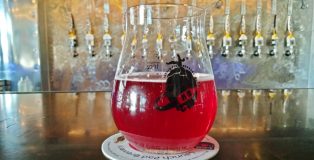
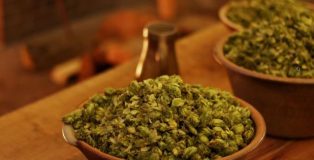

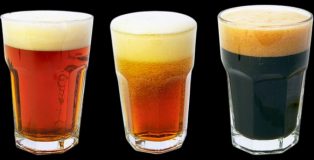
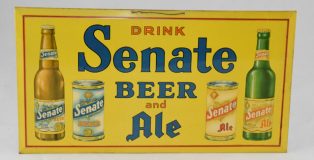

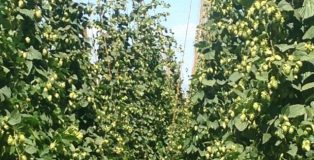
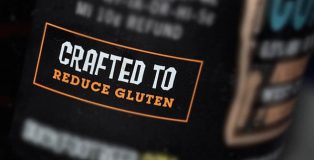
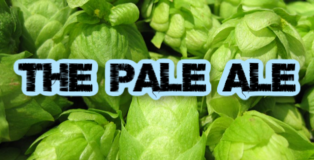
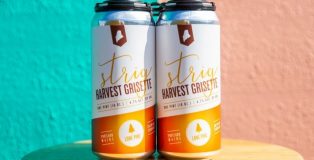
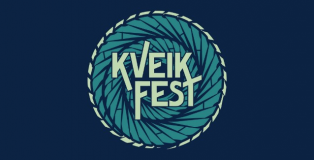
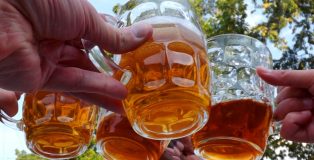

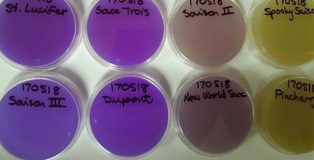
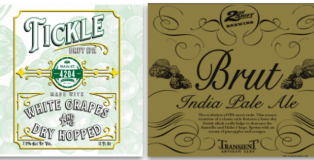


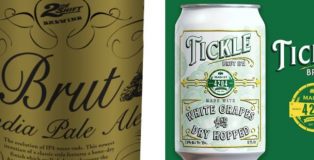
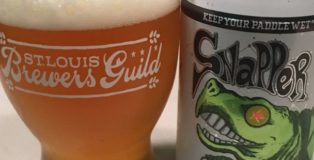
recent comments